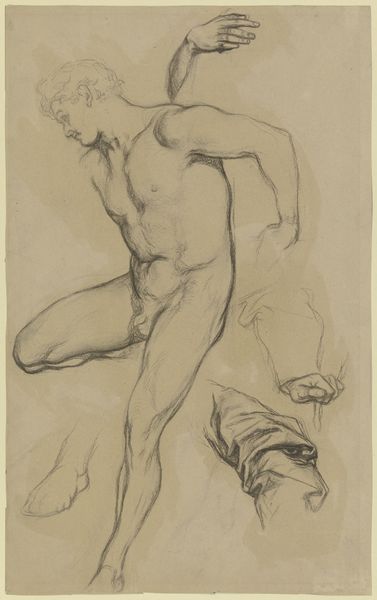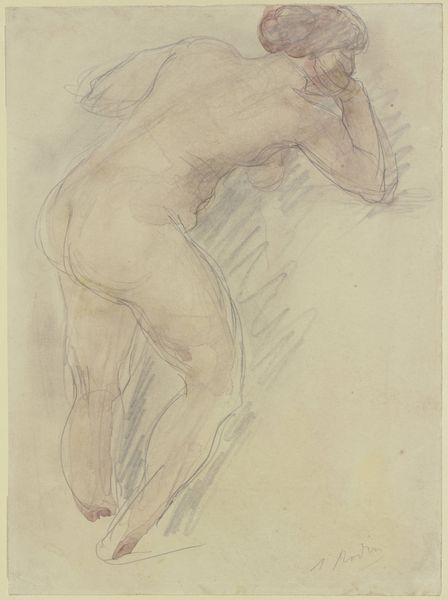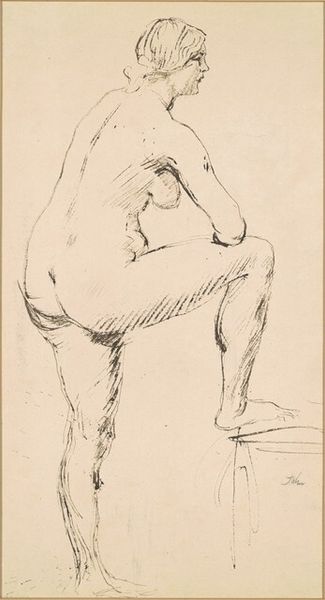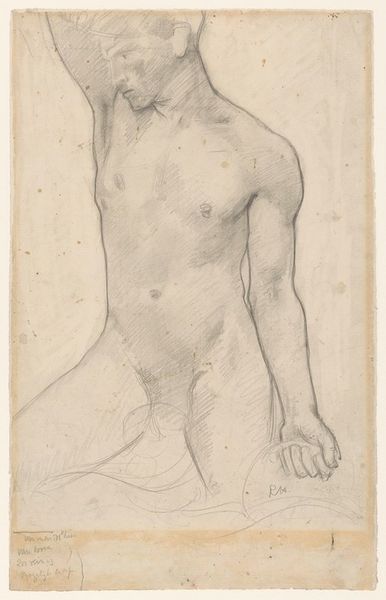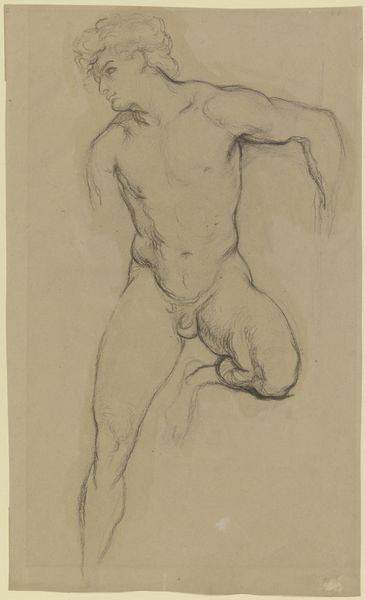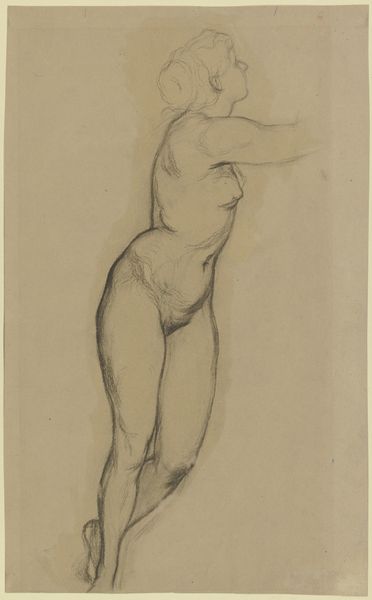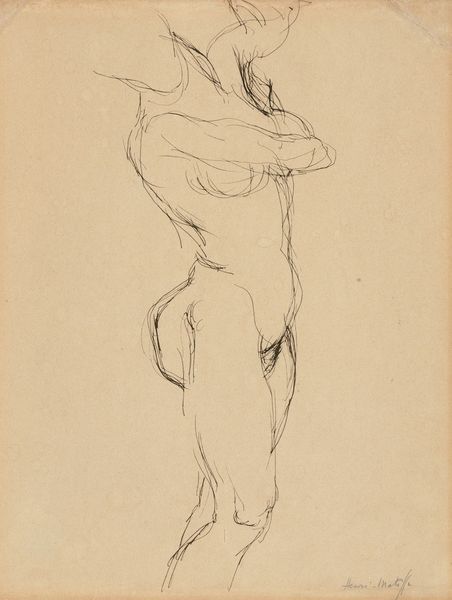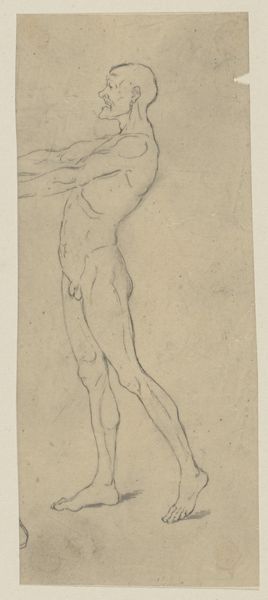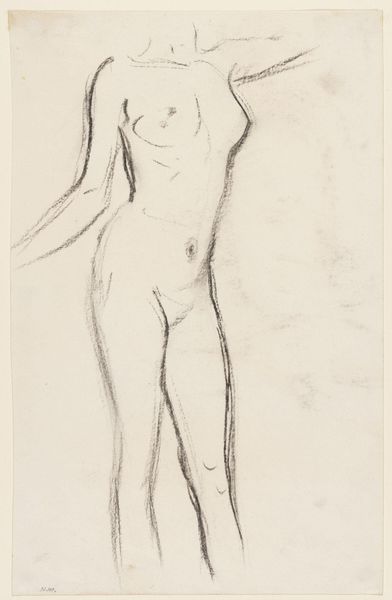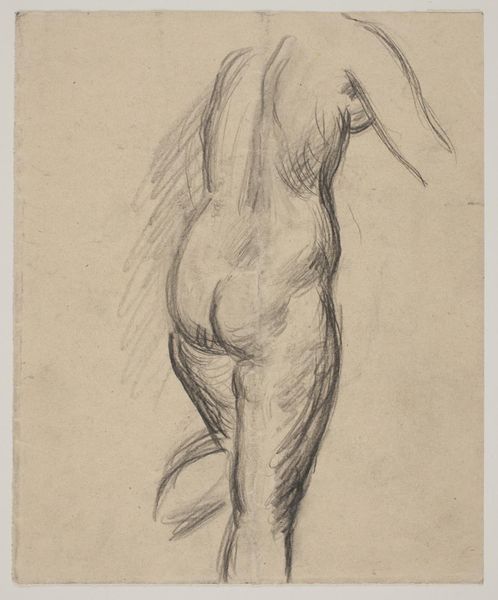
Dimensions: Overall (folded sh): 31.2 x 20 cm (12 5/16 x 7 7/8 in.) overall (unfolded): 31.2 x 40 cm (12 5/16 x 15 3/4 in.)
Copyright: National Gallery of Art: CC0 1.0
Curator: Up next, we have a drawing by Auguste Rodin. Created in 1908 using pencil on paper, it’s called "Seated Female Nude Leaning to the Left." Editor: Immediately, the open, almost hesitant lines give a sense of fleeting movement, a study in transience. It’s like a half-remembered dream of the body. Curator: Rodin was fascinated by capturing the human form in all its expressiveness, but I also see themes of vulnerability here. The slight tilt of the head and the position of the arm suggest introspection, maybe even weariness. It echoes his exploration of psychological states in sculptures. Editor: It’s not just psychological; it's intrinsically linked to the physical act of drawing. The pencil's delicate, almost hesitant marks highlight Rodin's intense observation and constant adjustment as he seeks to map the figure's spatial presence. The layering suggests he’s trying to pin down a three-dimensional form on a two-dimensional surface, again and again. Curator: Interestingly, he's choosing to focus on line, eliminating tone. The contour becomes a potent carrier of cultural memory, recalling classical Greek statuary but also subverting those ideals with its incompleteness, its restless energy. It connects to archetypal images of the female nude while also presenting a raw, unfiltered vision. Editor: Indeed, those incomplete lines! Semiotically, their “lack” speaks volumes. The figure is there, but simultaneously not quite fully defined. That incompleteness charges the work, compelling the viewer to become complicit in its making, filling in those negative spaces and, by extension, perhaps becoming more aware of the fragmented nature of all forms of representation. Curator: Thinking about that, the raw vulnerability and the tentative linework also call to mind questions of the artist's own gaze—how Rodin, as a male artist, is perceiving and interpreting the female form within his sociohistorical context. Is this about aesthetic idealization, a kind of appropriation, or about something more like empathic representation? Editor: Appropriation cannot be denied when viewing such a form. However, the artist’s compositional decisions mitigate such a stark reading. Instead, by means of form, line, and openness, he compels an engagement between the image and the subjective consciousness of each viewer. Ultimately, Rodin delivers something remarkably insightful, prompting the viewer to reflect upon their own mode of seeing, their personal baggage. Curator: It leaves us contemplating the layered relationship between perception, representation, and cultural narrative, which are continuously reshaped in time. Editor: An engagement that underscores art’s generative capacity to confront each viewer with themself, the means and agency by which meaning gets assigned.
Comments
No comments
Be the first to comment and join the conversation on the ultimate creative platform.


